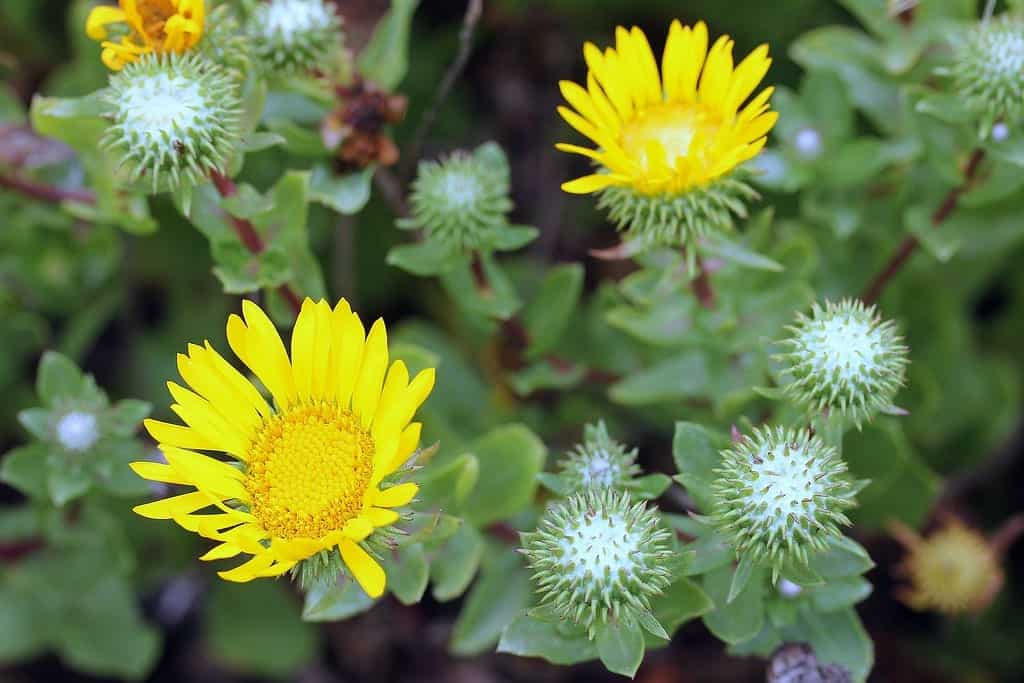 Today, our wetlands journey begins closest to the shoreline where low marsh plants meet the water’s edge. These are the first defenders of high tides, storm surges and rising sea levels and offer habitat for many species of wildlife, threatened and endangered. There are many low marsh species, but we want to introduce you to one of the tallest and shrubbiest plants around, Marsh Gumplant.
Today, our wetlands journey begins closest to the shoreline where low marsh plants meet the water’s edge. These are the first defenders of high tides, storm surges and rising sea levels and offer habitat for many species of wildlife, threatened and endangered. There are many low marsh species, but we want to introduce you to one of the tallest and shrubbiest plants around, Marsh Gumplant.
Personality: Sweet, Nurturing and Protective
Special Talents: Elicits the aroma of juicy fruit gum
Friends: Ridgway’s Rail, Salt Marsh Harvest Mouse and Spittlebugs (aka Froghoppers)
Foes: Pepperweed, Russian Thistle, Rising Sea Levels
Gumplant is a heavy lifter and protector of our shorelines. This tidal marsh specialist tends to grow just along the water’s edge and takes the hit from muddy waters caused by high tides, rising sea levels and flooding. It is a great source of food and habitat for many animals that live in the marsh. It’s where Ridgway Rails take cover from the tide and where baby spittlebugs hide and transform into adults, known as froghoppers. The pollen, nectar and seeds produced by its bold, yellow flowers also provide food for a number of marsh pollinators and other cute critters including the Salt Marsh Harvest Mouse.
|
Gumplant by the Numbers Each year we harvest, grow and transplant 25,000 individual tidal marsh plants and Gumplant makes up the largest segment of what we grow. 5,000 – Gumplant propagated $2.15 – Cost per plant $10,750 – Total cost of Gumplant per year |
The total cost for all the plants we grow each year is approximately $60,000. On Giving Tuesday we’re raising $20,000 toward this cost, and you can help. Give today or on December 3.

















































